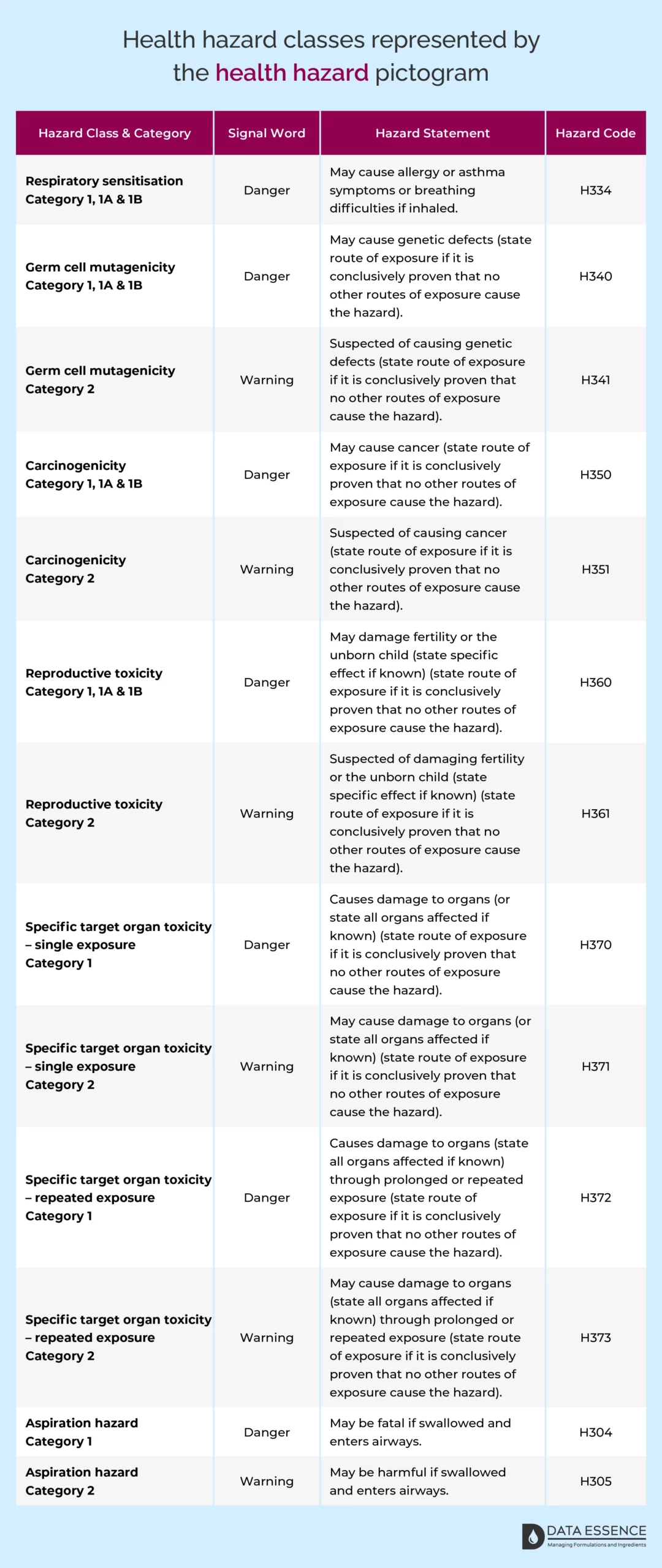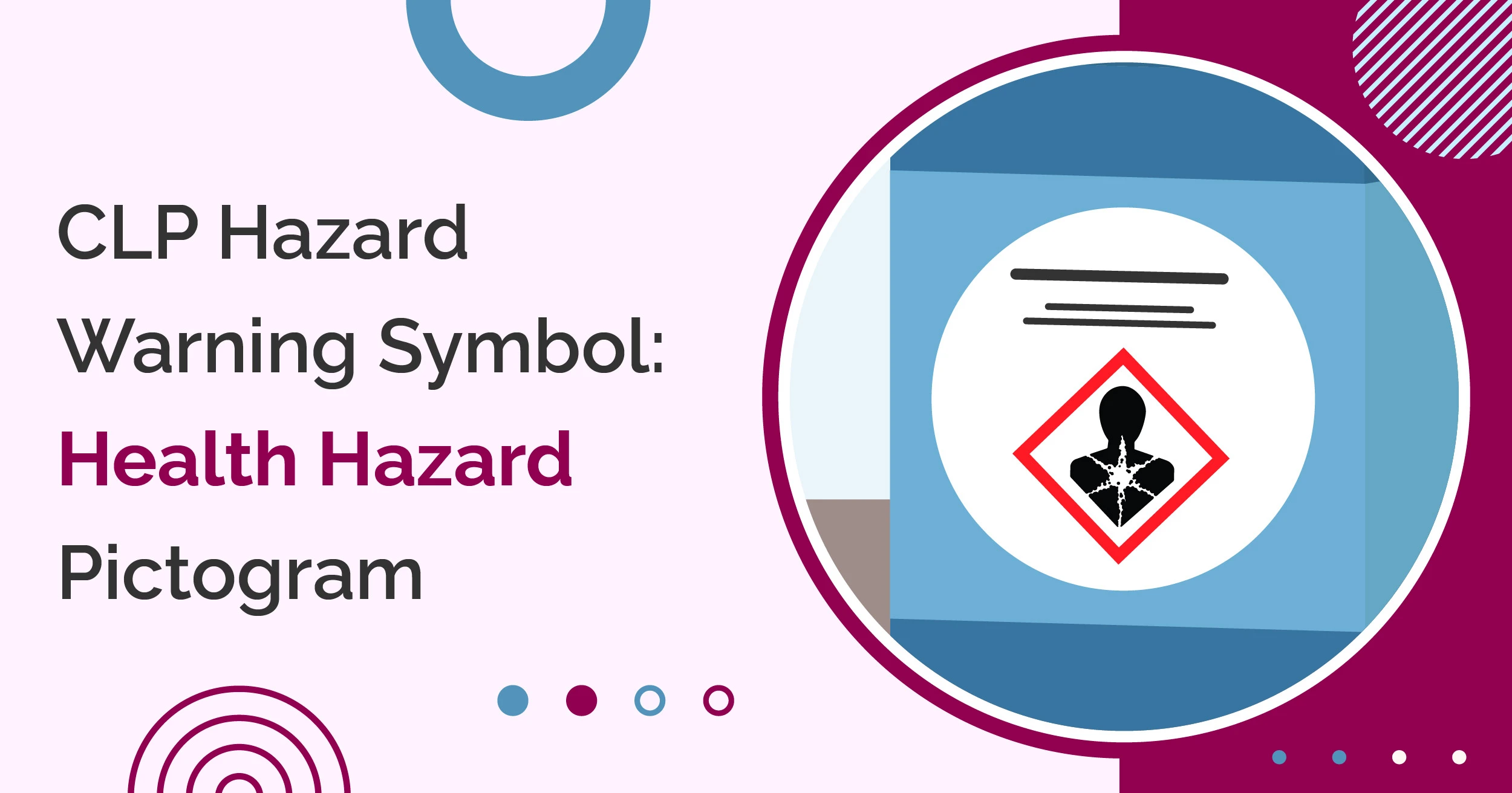Whether you already handle products that pose serious health hazards or are simply interested in learning more about the necessary safety precautions, this blog post will provide you with valuable insights to protect yourself and others from potential hazards.
What does the health hazard pictogram mean?

What are serious health hazards?
Health hazard classes represented by the health hazard pictogram

The implications of the exclamation mark pictogram
- Fatality through ingestion: These substances can be fatal if swallowed or inadvertently enter the airways.
- Organ damage: Health Hazard substances may cause immediate or long-term damage to vital organs within the body.
- Fertility and birth defects: Exposure to these substances may harm fertility and pose risks to the unborn child.
- Cancer and genetic defects: Some of these substances are known or suspected carcinogens, capable of causing cancer and genetic defects.
- Respiratory distress: Inhalation of these substances can lead to allergic reactions, asthma symptoms, and breathing difficulties.
Beyond the specific risks indicated by the health hazard pictogram, it is crucial to bear in mind that a product may encompass supplementary hazards, including:
- Other health hazards such as acute toxicity, skin corrosion, serious eye damage, skin irritation, or eye irritation.
- Physical hazards such as flammability, reactivity, or corrosiveness.
It is imperative to consistently consult the Safety Data Sheet (SDS) and product CLP label when working with a particular substance. This ensures comprehensive awareness of the substance’s composition, associated hazards, and necessary precautions. Do not hesitate to seek clarification by asking questions if any uncertainties arise.
Protective measures for serious health hazardous substances
- Immediate action: In the event of ingestion or exposure, seek immediate medical assistance by contacting a poison centre or a qualified doctor/physician. Do not induce vomiting, as it may exacerbate the situation.
- Avoid inhalation: Steer clear of inhaling any dust, fumes, gas, mists, vapours, or sprays generated by these substances. Use them only in well-ventilated areas or outdoors.
- Hygiene measures: Do not eat, drink, or smoke while handling these products. After any contact with these substances, practice thorough handwashing to remove any residue.
- Monitor your well-being: If you begin to feel unwell after handling these substances, do not hesitate to seek medical advice promptly.
- Special instructions: Before using these substances, obtain and carefully review any special instructions provided. Only proceed with their use once you have fully comprehended all safety precautions.
- Personal protective equipment: Employ the necessary personal protective equipment (PPE) as specified. This may include gloves, suitable clothing, eye protection, and respiratory gear.
- Medical consultation: In case of exposure to any substances displaying the Serious Health Hazard symbol, seek medical advice to evaluate potential health implications.
- Respiratory protection: In instances of inadequate ventilation, wear appropriate respiratory protection to mitigate inhalation risks.
- Difficult breathing: If someone accidentally inhales these substances and experiences breathing difficulties, immediately move them to an area with fresh air and ensure they are at rest in a comfortable breathing position.
Safe storage for serious health hazardous substances
When handling products featuring the health hazard pictogram, it is crucial to implement safe storage practices. Here are some guidelines to ensure the safe storage of such products:
- Regular inspection: Routinely inspect both containers and the storage area for any signs of leakage or damage.
- Original packaging: Store the products in their original, properly labelled shipping containers.
- Minimal quantity: Keep the quantity in storage to an absolute minimum, reducing the risk associated with storage.
- Ideal environment: Maintain a cool, dry, and well-ventilated storage area, while also ensuring the products are shielded from direct sunlight. Clearly post warning signs for added safety.
- Limited access: Restrict access to authorised personnel only and consider utilising locked storage facilities for an added layer of security.
- Compatibility check: Ensure that these products are kept away from incompatible materials by consulting the Safety Data Sheet (SDS) for specific information.
- Low-level storage: Store the products on shelves at or below eye level, avoiding high cabinets or shelves.
- Secure containers: Always keep containers closed and store them in closed containers with tight-fitting lids.
- Residue handling: Be aware that empty containers may still contain hazardous residue; thus, store them separately and ensure they remain closed.
By adhering to these storage guidelines, you can mitigate the risks associated with products displaying the health hazard pictogram and maintain a safer working environment.
Conclusion
By acknowledging the potential risks associated with serious health hazards, such as inflicting sever harm on human health, and implementing appropriate safety measures, we create a safer working environment for employees and minimise the possibility of accidents. Storing, transporting, and handling these products in accordance with the health hazard pictogram guidelines is essential to protect not only employees but also customers and the environment.

